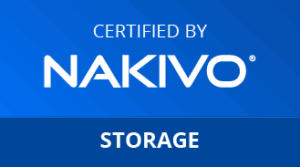CFOs do not buy storage every day, so we decided to provide 4 CFO storage purchasing tips to help them, and other IT buyers, make the proper selections for their organizations. These tips are essential and timely because storage vendors are pushing their potential customers to make heavily-pressured, end-of-the-quarter storage purchases. These, sudden special offers make their way, depending on organizational size, to the CFO, CTO, or CEO. Purchasing storage can be confusing, especially under pressure. These tips should give you some insight into how to make the right decision.
Once a set of quotes or proposals land on your desk, you have to decide if you want to engage, and which vendor is the right vendor. Most executives will look at the cost and try to determine if the vendor is charging a fair price for the solution. The problem is, where do you go for research? Storage vendors do not publish their pricing, which means you have to solicit quotes from other companies or at least other resellers offering the same product.
CFO Storage Purchasing Tip #1 for – Look for an Alternate Vendor
Most storage vendors will offer their solution through a value-added reseller (VAR). VARs do add value but, like any other group, vary in capabilities. If the storage vendor offers special pricing and hasn’t sacrificed the VAR in the process, they are likely only offering the special pricing through one VAR.
Instead, look for an alternate vendor that can provide a better price with similar or maybe even better capabilities. You may find getting a price from the alternate vendor also tricky.
The difficulty in getting and understanding pricing is why StorONE created TRUprice. It is a very easy-to-use tool that enables you to configure and price a complete storage system in minutes. You may also find it refreshing to know the price on the TRUprice is THE price. You don’t have to go through rounds of intense and frustrating negotiations. The price listed is what everyone pays and, that price is substantially less than our competitors. More importantly, our price is as valid on the first day of the quarter as it is on the last.
CFO Storage Purchasing Tip #2 – Quoted Capacity Is Confusing
In theory, one of the easy metrics to measure is the cost per terabyte. You must understand the “real” capacity, not the quoted capacity. Ensure the vendor can give you a reasonable estimate of the available capacity after media failure protection (RAID) overhead. Most vendors don’t provide any guarantees for recovery from media failure times. Assume the worst case, double-digit hours for flash systems and days for hard disk bases systems. These long rebuilds mean you have to sacrifice extra capacity and performance for redundant media settings.
Also, make sure you understand the performance impact of running at high capacity utilization. Many storage systems will start experiencing a loss of performance at 55% to 60% of utilization. These factors mean that a 500TB storage solution from legacy storage vendors may only deliver 205TB of total capacity after RAID and artificial capacity limits caused by poor performance.
StorONE makes capacity calculations simple. Once we know your workload mix, we can tell you within percentage points your usable capacity after vRAID (our take on media failure protection). We’ve proven that vRAID can rebuild flash volumes in minutes and hard drive volumes in less than two hours. There is no need to over-allocate more than a drive or two for media redundancy. We also run at 90% of capacity utilization with no performance impact. As a result of our efficiency, that 500TB system will deliver over 366TB of usable capacity. That is 101TBs more usable capacity for less money.
CFO Storage Purchasing Tip #3 – Performance is Easy, Affordable Performance is Not
Thanks to all the innovations in storage hardware in the last decade, delivering high performance is easy if you throw enough of that hardware at the performance requirement. The problem is throwing enough hardware at the problem is expensive. All storage systems have software as their main component. That software, though, counts on inefficient, twenty-year-old storage software libraries and file systems. As a result, they only extract 10% of the per drive performance.
StorONE completely rewrote and flattened the storage IO stack. Before releasing a product to the market, our first eight years were spent inventing new, optimized algorithms to fully exploit the potential of storage hardware innovations. The result is we can solve today’s performance problem with fewer drives (and run at higher capacity utilization).

A StorONE storage solution with eight SSDs outperformed a name-brand competitor with 24 flash drives in a recent customer test. While flash media is less expensive than it was three years ago, it is still the most expensive media in the data center. Imagine not having to buy 16 extra drives because eight drives more than meet your performance demands. In drives alone, by using 16 fewer drives, we saved that customer $48,000.
CFO Storage Purchasing Tip #4 – Don’t Put Yourself Through This Next Quarter
Because of their software’s inefficiency, most storage vendors focus their storage solutions on just one use case. That is why every quarter, you find yourself approving a storage system for another use case. This quarter it might be for your VMware and Hyper-V environments. Next quarter it may be for your database servers—the quarter after that, it may be for file serving. Then you may have to approve a storage solution for backup or archive. It never stops!
Not soon after you make all these decisions, you have to start the whole process over again because the storage solutions need an upgrade or have hit their performance or capacity limits. When a storage system hits its limits, it also requires a costly, error-prone, and time-consuming data migration. All of these separate storage systems add to the cost overhead of additional IT personnel, which are always hard to find.
With StorONE, you can get off of the purchasing merry-go-round. You can buy one storage system that can address all the above workloads. With the StorONE, Storage Engine, data migrations are a thing of the past. All upgrades are done non-disruptively without data migration.
Conclusion
The flexibility and efficiency of our Storage Engine means that we can, in a single storage environment, provide a solution that delivers industry-leading $ per gigabyte while at the same time delivering the industry’s best $ per IOPS. Imagine leveraging one platform for the next ten years, and all you have to do is approve capacity expansion and industry-low pricing that are published online? Over ten years, that is 40 price negotiations that didn’t happen. Imagine the time (and stress) savings. Over that ten years, you’ll enjoy quarterly updates to our software that add significant new and unique capabilities, and you’ll enjoy the lowest TCO in the industry.
Want to get off of the purchasing merry-go-round? Head over to TRUprice now or register for our TCO Whitepaper “The True Value of Total Resource Utilization.”


